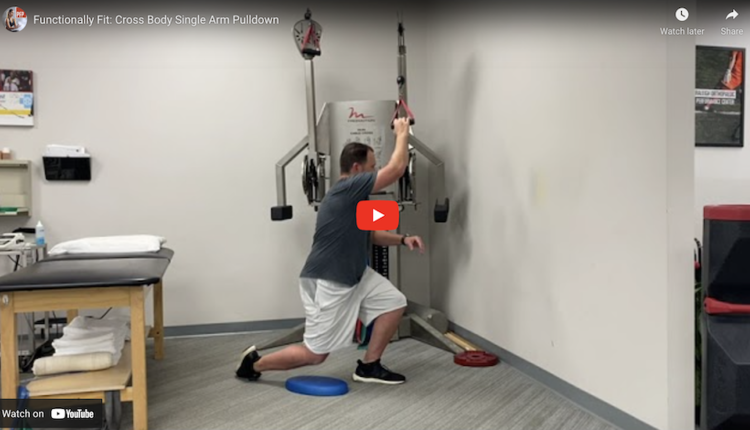Improving pillar strength and shoulder stability are important when working with overhead athletes and those routinely involved in overhead lifts. With poor thoracic spine mobility, premature fatigue and poor trunk stability, the shoulders and lumbar spine are often compromised with repetitive overhead activity. This exercise promotes shoulder and trunk stability alike.

Execution: Begin in kneeling and position the forearms on a stability ball. Next, rise up in a plank position with the feet shoulder width apart. Actively engage the the core to achieve a good neutral spine angle. Now, slowly rotate the forearms in a clockwise motion using small circles in a controlled and deliberate manner. Perform 10 repetitions or for 30 seconds. Then, reverse the direction and repeat the movement in a counterclockwise manner.
It is important to sense fatigue or giving way in the low back as this indicates a loss of postural stability and unwanted hyperextension in the lumbar spine. This can be impacted by how far forward or back the forearms are to start (longer/shorter lever arm), as well as the amplitude of the circles. Be sure to coach the client to maintain good spinal alignment throughout by cuing them to stay tall and keep a neutral spine. It is often necessary to remind the client to perform a small chin tuck and/or not to look straight ahead, but rather down at the ball during the movement.
Progressions:
1. Increase the reps, cadence or total time under tension
2. Increase the amplitude of movement
3. Position the feet less than shoulder width apart
Regressions:
1. Decrease the reps, cadence or total time under tension
2. Decrease the amplitude of movement
3. Increase the width of the feet beyond shoulder height or position the knees on the floor
Application: This exercise is an excellent way to increase shoulder girdle and glenohumeral stability, as well as promoting overall pillar strength. The ball allows for very fine and incremental progressions and regressions with respect to movement, and the plank position facilitates anti-extension and anti-rotation control in the trunk which is beneficial for overhead athletes and those performing overhead lifts. For those clients with less innate trunk and shoulder stability, I advise beginning with the knees on the floor and working to advance from there.


















